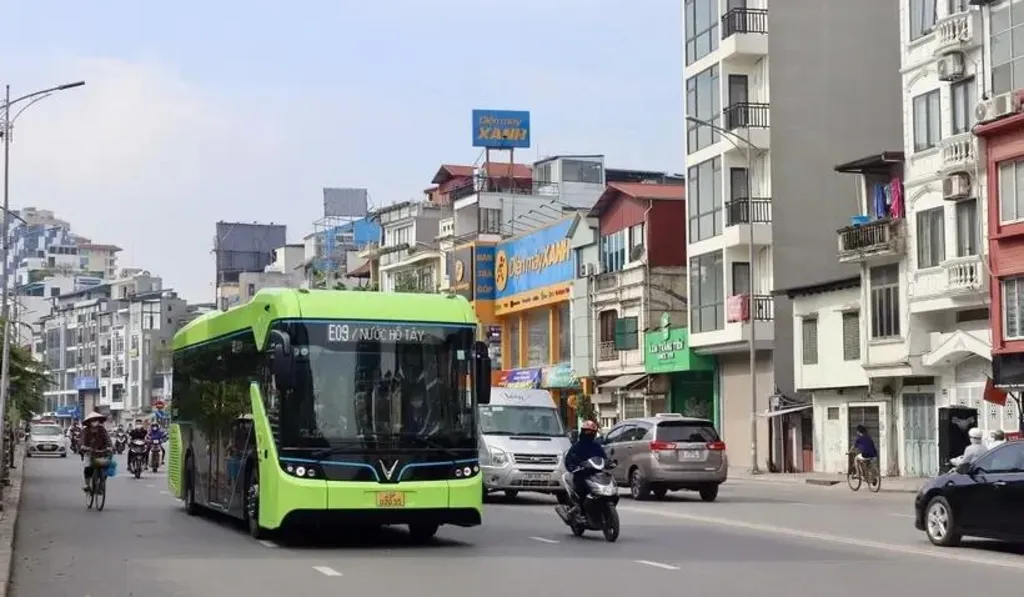 |
| Hanoi launches additional electric bus routes to reduce greenhouse gas emissions into the environment__Photo: VNA |
In the context of sustainable growth as a trend in the global economy, many transportation companies in Vietnam are striving to build environmentally friendly supply chains as a competitive advantage in delivery and market expansion, especially given that transportation accounts for up to 37 percent of global greenhouse gas emissions.
Green transportation refers to the use of environmentally friendly modes of transportation that minimize emissions and reduce reliance on fossil fuels by using electric or hybrid vehicles, as well as biofuels and other sustainable fuels.
However, transportation infrastructure in Vietnam is still incomplete, especially in remote areas. This poses challenges for the use of environmentally friendly means of transportation, such as electric vehicles (EV). The lack of support infrastructure, such as EV charging stations, green warehouses, and distribution centres is also a barrier for businesses.
Nguyen Thi Phuong Hien, Deputy Director of the Transport Development & Strategy Institute, stated that the transportation development strategy aims to promote green logistics toward sustainable growth in Vietnam through the implementation of strategies for green freight transportation, as well as for maritime, aviation, railway, inland waterways, and road sectors. The ultimate goal is to achieve net-zero emissions in the transportation system by 2050.
Vice President of the Vietnam Maritime Corporation Le Quang Trung said that a large number of ships operated by Vietnamese shipping companies are aging and do not meet the carbon emission reduction requirements set by the International Maritime Organization (IMO). When participating in international shipping routes, these vessels are forced to reduce engine power, which can lead to technical damage and significantly lower ship speeds. Some are aged to the point where it only makes sense to take them out of service.
To meet the IMO requirement of reducing carbon emissions by at least 2 percent annually, ship owners must not only equip their vessels with additional technology but also undertake significant structural modifications or invest in ships using alternative fuels such as liquefied natural gas (LNG) or methanol.
Currently, the Ministry of Transport is implementing the National Green Growth Strategy for the 2021-2030 period, with a vision to 2050, as approved by the Prime Minister. This involves reviewing and recommending adjustments to transportation development projects to ensure the restructuring of transportation market share towards green and sustainable growth.
In addition, the sector is focusing on applying digital technology to optimize the management and operation of transportation infrastructure and activities, ensuring safe and smooth transportation while reducing energy consumption.- (VNA/VLLF)









